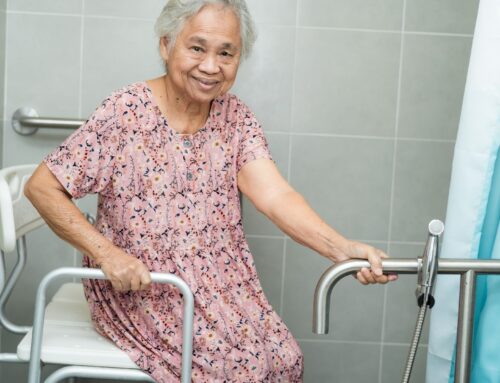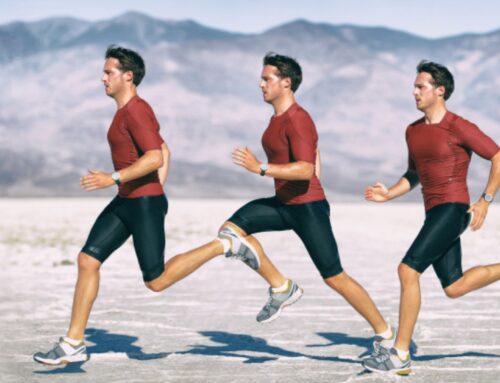Injuries due to improper lifting are common and costly. Each year several thousand Canadian workers are permanently disabled by low back injuries. Many others are unable to return to their former jobs.[i] Whether it is your job to handle heavy materials like boxes, bags and equipment, lifting or transferring people in and out of chairs, washrooms or beds, using proper lifting techniques and ensuring adequate rest between lifts is essential in mitigating the risk of injury.
In this article, we will demonstrate proper lifting techniques for manual material handling as well as special considerations for caregivers and healthcare providers.
Manual Material Handling
Manual material handling is the most common cause of occupational fatigue and low back pain and affects 75% of people who are required to do manual material handling as part of their job. In fact, this type of back injury accounts for approximately one third of all lost work time, and one third of compensation costs.
Performing these tasks continually, without adequate rest breaks, causes an accumulation of mechanical stress in the worker’s body and increases their risk for injury. As a result, fatigue and pacing, along with the weight and location of the load being lifted, are important considerations when assessing the risk of injury.[ii]
Follow these proper lifting techniques to reduce your chance of injury:
Steps for Proper Lifting:
- Keep the weight as close to your body as possible
- Squat down low, bending through your hips and knees, you can also take a staggered stance, with one foot half kneeling in front
- Keep your back straight and shoulders back
- Lift the weight by straightening your hips and knees, rather than pulling up through your back
- Take small steps to change direction while walking with the weight
- Avoid reaching or twisting your body while lifting or holding a heavy weight
- Take breaks between lifting to prevent fatigue, and avoid rushing
Temperature is another consideration that can increase the risk of injury when lifting loads. Hot, humid conditions often make the worker tire more easily, leading to fatigue, while cold conditions cause muscle and joint stiffness, increasing the risk of a musculoskeletal injury.[iii]
Special Considerations for Caregivers and Health Care Providers
Patient handling refers to lifting, transferring, or repositioning patients and it can often lead to musculoskeletal injuries to caregivers and healthcare workers due to gradual and cumulative stress on the body or a sudden exertion due to high forces or awkward postures.
These injuries are common and costly, and prevent health care workers and caregivers from providing care to their patients, clients and loved ones. As a result, special considerations need to be made for the health and safety of long-term caregivers and health care professionals.[iv]
When lifting a box or other inanimate object, it is easy to get close to the object. However, when transferring a person, there is often an additional 10 to 14.5 inches of horizontal space that needs to be accounted for when determining safe lifting limits, and which increases the load on the caregiver’s spine.
Based on these conditions, the recommended weight limit for patient handling is 35 pounds. This assumes the most ideal, low risk situation for the caregiver, but is not realistic for most caregiver relationships.
Other factors that make the transferring situation less ideal or safe include: lifting with extended arms, lifting when near the floor, lifting when sitting or kneeling, lifting with the trunk twisted or the load off to the side of the body, lifting with one hand or in a restricted space, or lifting during a shift lasting longer than eight hours. Based on these realistic scenarios, the safest form of transfer for the client and the caregiver is a mechanical transfer using a lift whenever possible.[v]
For the purposes of this discussion, a distinction needs to be made between a patient transfer and a patient lift:
Patient transfer: a dynamic effort in which the patient aids in the transfer and is able to bear weight on at least one leg. [vi]
Patient lift: involves moving a patient who cannot bear weight on at least one leg. Lifts should always involve mechanical lifting devices.v
Injuries to caregivers during transfers typically occur when a patient transfer suddenly or unexpectedly becomes a patient lift and the caregiver needs to accommodate for increased load.5
When it is not possible to use a mechanical lift, caregivers and health care professionals should have extensive training in transfer and repositioning techniques to minimize the risk of injury to themselves and to the client.
Steps for Safe Pivot Transfer
Below is an example of a pivot transfer. This client is able to weight bear on their right lower extremity and has limited use of their left lower extremity. The transfer is set up so the client is moving toward their stronger side, and they are able to weight bear to pivot on their leg and assist with the transfer. The therapist is bending through their hips and knees and keeping their back straight to prevent excessive load through their spine.
The steps for completing this pivot transfer from chair to bed are as follows:
- Set up the chair as close as possible and parallel to the bed, and at roughly the same height
- Lock the brakes on the wheelchair and move footrests out of the way so their feet are flat on the floor
- Help the client position themselves at the edge of the chair and angle the client’s legs so they are in a better position when you go to sit them down on the bed
- Place your hands at the client’s hips and have them lean toward you, looking over your left shoulder
- Place your knees in front of the client’s knees to keep them stable
- Have the client push through their feet to stand up, then pivot and gently sit them down on the bed
- Reposition their feet and move them back on the bed if needed.
This transfer can also be performed with a sliding board, in which case you can have the client pause halfway across the board to rest before performing the rest of the transfer.
Our therapists have extensive training in lifting biomechanics and patient transfers, and we use these techniques daily in our work. If you are having difficulties with lifting or transfers, the therapists at Propel Physiotherapy can help you with finding and perfecting the proper lifting technique to protect your body and prevent injuries.
Reach out today to book a 15-minute complimentary consultation to discuss your needs or book in with one of our therapists for an initial assessment.
References
[i] MMH Health Hazards, OSH Answers Fact Sheets, Canadian Centre for Occupational Health & Safety
[ii] MMH Health Hazards, OSH Answers Fact Sheets, Canadian Centre for Occupational Health & Safety
[iii] Client handling in health care, Occupational Health & Safety Compliance, Province of Ontario
[iv] Safe Patient Handling and Mobility (SPHM), The National Institute for Occupational Safety and Health (NIOSH), Centers for Disease Control and Prevention
[v] Ergonomic Safe Patient Handling Program, OSH Answers Fact Sheets, Canadian Centre for Occupational Health & Safety
[vi] Patient Care Ergonomics Resource Guide: Safe Patient Handling and Movement, Patient Safety Center of Inquiry (Tampa, FL), Veterans Health Administration and Department of Defense
Written by










